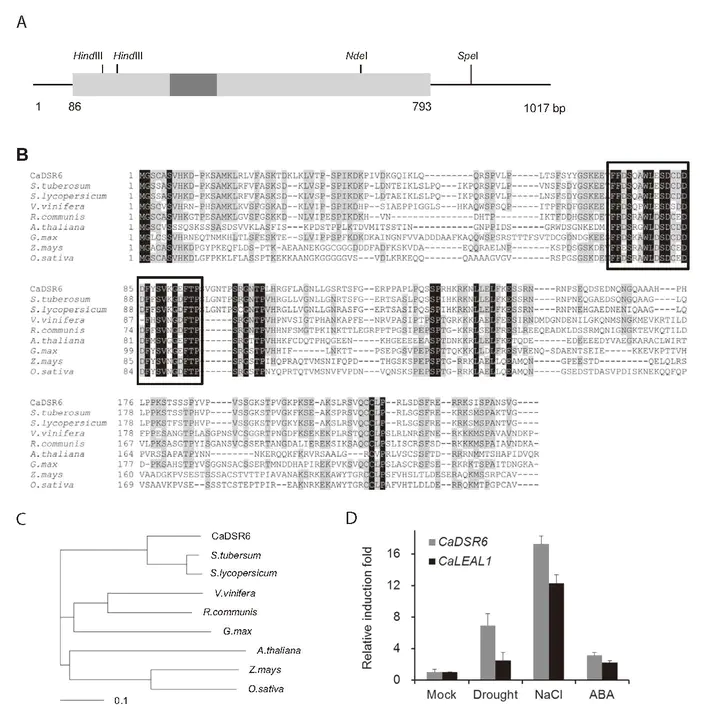Overexpression of CaDSR6 increases tolerance to drought and salt stresses in transgenic Arabidopsis plants
 Image credit: [Eunyu Kim]
Image credit: [Eunyu Kim]Abstract
The partial CaDSR6 (Capsicum annuum Drought Stress Responsive 6) cDNA was previously identified as a drought-induced gene in hot pepper root tissues. However, the cellular role of CaDSR6 with regard to drought stress tolerance was unknown. In this report, full-length CaDSR6 cDNA was isolated. The deduced CaDSR6 protein was composed of 234 amino acids and contained an approximately 30 amino acid-long Asp-rich domain in its central region. This Asp-rich domain was highly conserved in all plant DSR6 homologs identified and shared a sequence identity with the N-terminal regions of yeast p23fyp and human hTCTP, which contain Rab protein binding sites. Transgenic Arabidopsis plants overexpressing CaDSR6 (35S:CaDSR6-sGFP) were tolerant to high salinity, as identified by more vigorous root growth and higher levels of total chlorophyll than wild type plants. CaDSR6-overexpressors were also more tolerant to drought stress compared to wild type plants. The 35S:CaDSR6-sGFP leaves retained their water content and chlorophyll more efficiently than wild type leaves in response to dehydration stress. The expression of drought-induced marker genes, such as RD20, RD22, RD26, RD29A, RD29B, RAB18, KIN2, ABF3, and ABI5, was markedly increased in CaDSR6-overexpressing plants relative to wild type plants under both normal and drought conditions. These results suggest that overexpression of CaDSR6 is associated with increased levels of stress-induced genes, which, in turn, conferred a drought tolerant phenotype in transgenic Arabidopsis plants. Overall, our data suggest that CaDSR6 plays a positive role in the response to drought and salt stresses.